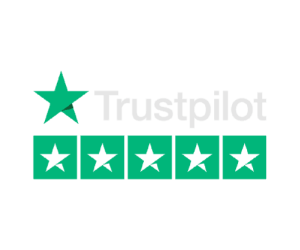As the digital landscape becomes more globalized, businesses are no longer confined to a single market. However, reaching international audiences requires more than just translating content or targeting new keywords. International SEO ensures that your website is optimized to attract users from different countries, catering to their languages and specific search engine preferences.
What is International SEO?

International SEO refers to the process of optimizing your website so that search engines can easily identify the countries and languages you want to target. It involves a mix of technical and content-based strategies aimed at improving your site’s visibility and relevance in global markets. By aligning your SEO efforts with geographical regions and language preferences, you create a better user experience for your international audience.
Why International SEO is Crucial for Global Business Success
For companies with global ambitions, international SEO is vital. It goes beyond traditional SEO practices by addressing the unique needs of each market. Without proper international SEO, you risk directing potential customers to the wrong version of your site. For example, imagine a user from Germany landing on your English site instead of your German one — the language mismatch could drive them away. Thus, international SEO not only improves organic traffic but also contributes directly to conversion rates and revenue growth.
Key Differences Between Regular SEO and International SEO
While regular SEO focuses on optimizing a website for a specific audience in one country, International SEO is about adapting to multiple regions, languages, and search engines. It incorporates strategies like hreflang tags, language-specific keywords, and geotargeting to ensure that users in different countries are served the right content. Another key difference is that international SEO needs to account for local search behaviors, cultural nuances, and legal regulations (like GDPR).
Strategies for International SEO

Using Metadata for Country Targeting
One of the foundational strategies in international SEO is leveraging metadata. Metadata helps search engines and users understand the geographic targeting of your pages, and it can be particularly useful for multinational websites.
Alpha-2 Country Codes and Their Importance
Adding alpha-2 country codes to your metadata (like the title tags) signals to both users and search engines which country the page is designed for. For example, if you’re targeting users in the UK, you can append “en-GB” to indicate the English language version meant for British audiences. These two-letter codes are essential in providing clarity, especially when you operate in regions where the same language is spoken in different countries.
Limitations of Country Codes in Multi-Language Websites
However, there are limitations to this approach. If your website uses a language-based structure, such as “/en” for English, targeting all English-speaking countries with alpha-2 country codes can become tricky. A single “/en” subfolder might represent audiences from the UK, the US, Canada, and more, which can create issues in accurately targeting specific regions. In such cases, other methods like hreflang and geotargeting may be more effective.
Location-Based IP Detection
A more technical approach to international SEO is location-based IP detection, where a user’s IP address determines their country, and they are served the corresponding version of the site.
Benefits of IP Detection for International Targeting
When implemented correctly, IP detection can improve the user experience by redirecting users to the most relevant version of your site. For instance, if a French user visits your English site, an automatic prompt could suggest switching to the French version, reducing bounce rates and improving engagement.
Legal Challenges: GDPR and IP Addresses
Despite its benefits, using IP detection comes with challenges, particularly regarding data privacy regulations. Under the General Data Protection Regulation (GDPR), IP addresses are considered personally identifiable information (PII). This means businesses must handle this data carefully, with user consent being a critical factor. Additionally, IP-based location detection isn’t always accurate, especially when users are browsing through VPNs or proxy servers.
Implementing Hreflang Tags
Perhaps the most well-known international SEO tool is the hreflang tag. Hreflang is an HTML attribute used to tell search engines which language and regional URL version should be served to the user.
How Hreflang Tags Work for Multi-Language Websites
Hreflang tags specify language-region pairs for search engines, ensuring that a user in Germany sees the German version of your site, while a French user sees the French version. This is critical for preventing duplicate content issues, as it helps Google understand that different language versions are meant for different audiences.
Best Practices for Hreflang Implementation
To correctly implement hreflang tags, each page should have its corresponding hreflang tag pointing to every other language version of that page. Additionally, ensure proper reciprocal tagging, where each language version points back to the original page. Incorrect hreflang implementation can result in search engines not serving the correct version of your site, which defeats the purpose of this strategy.
Common Mistakes with Hreflang and How to Avoid Them
Common issues with hreflang tags include broken links, misconfigured tags, and pointing hreflang to non-indexable pages. To avoid these mistakes, validate your tags using tools like Google Search Console and test your setup to ensure the right content is being displayed to users in different regions.
Technical Considerations for International SEO
Site Structure for International Targeting
The structure of your website plays a crucial role in how search engines interpret your international targeting. There are three main approaches you can take: ccTLDs, subdomains, or subdirectories.
Country-Code Top-Level Domains (ccTLDs)
Using ccTLDs (like “.fr” for France or “.de” for Germany) is the most straightforward way to signal to search engines that your website is meant for a specific country. However, ccTLDs come with higher maintenance costs and can fragment your SEO efforts since each domain is treated as a separate entity.
Subdomains vs. Subdirectories for International Sites
An alternative to ccTLDs is using subdomains (e.g., “fr.example.com”) or subdirectories (e.g., “example.com/fr”). Both options allow for better control over SEO efforts. Subdirectories are often preferred for their ease of management and the ability to share link equity across all regions. Subdomains, on the other hand, offer greater flexibility but may require more effort to build domain authority.
The Role of Server Location and CDN in International SEO
How Server Location Influences Website Speed and Rankings
Your website’s server location can impact both your page load speed and SEO rankings. Search engines like Google consider website speed as a ranking factor, and users in far-flung regions might experience slower load times if your server is located halfway across the world.
Leveraging CDN for Faster Load Times Globally
To combat this issue, using a Content Delivery Network (CDN) can be a game-changer. CDNs cache your website’s content on multiple servers across the globe, ensuring that users from different regions experience fast load times, regardless of where your primary server is located.
Mobile Optimization and International SEO
Importance of Mobile-First Indexing for Global Audiences
With mobile-first indexing becoming the default, ensuring that your site is mobile-optimized across all regions is crucial. International audiences often rely on mobile devices for browsing, so mobile SEO is a critical aspect of any international SEO strategy.
Ensuring Mobile-Friendly Designs Across Regions
Regional differences in mobile usage patterns (e.g., bandwidth speeds, device types) should be considered when optimizing for mobile. For example, pages that load quickly in one country might be slow in another due to differences in infrastructure.
Measuring and Optimizing International SEO
Using Google Search Console for International Data
Google Search Console provides invaluable data for monitoring your website’s performance across different countries. You can filter by geography and language, giving you insights into how well your site is doing in each region.
Understanding Geographic and Language Filters
By analyzing the data available in Search Console, you can see which countries are driving the most traffic, and which language versions are performing best. This allows you to make data-driven decisions about where to focus your SEO efforts.
BigQuery and Looker Studio for International SEO Reporting
For more in-depth analysis, you can integrate Google Search Console with BigQuery and visualize the data in Looker Studio. This combination allows you to create customized reports and dashboards that track global SEO performance.
Building Custom Dashboards to Track Global Performance
Dashboards can help you monitor critical SEO metrics across different regions, including impressions, CTR, and conversions, providing you with a holistic view of your international SEO efforts.
SQL Queries for Categorizing and Reporting Target Countries
By using SQL queries in BigQuery, you can categorize traffic based on countries or languages and compare it with the targeted regions. This will help you identify discrepancies in targeting and refine your strategy accordingly.
Content Localization vs. Translation
Why Localization Matters More than Just Translation
When expanding internationally, merely translating your content isn’t enough. Localization goes beyond translation by adapting the content to suit the cultural nuances, idioms, and preferences of the local audience.
Adapting Content to Cultural Contexts
Tone and Messaging for Different Regions
For example, a casual tone that works well in the US may not resonate with audiences in Japan. It’s essential to understand how different cultures interpret your messaging and adjust your tone accordingly.
Keyword Research for Different Countries and Languages
Keyword research is critical in any SEO strategy, but international SEO requires a more nuanced approach.
Tools for Multi-Language Keyword Research
Tools like SEMrush, Ahrefs, and Google Keyword Planner can help identify high-performing keywords for different languages and regions. However, search intent often varies, even for similar keywords across countries.
Understanding Search Intent Across Cultures
Understanding how users search in different regions is vital. For example, while users in the US may search for “buy shoes online,” users in Spain might use a more descriptive query like “where can I purchase shoes online today?”
The Impact of Social and External Factors on International SEO
User Preferences and Local Search Engines
Different countries often prefer different search engines. For instance, while Google dominates in most markets, Yandex is popular in Russia, and Baidu in China. Optimizing for these local search engines requires understanding their unique algorithms.
How Language, Currency, and Local Trends Affect SEO
Users in different regions have different preferences when it comes to currency formats, shopping habits, and trending topics. Tailoring your SEO strategies to reflect these factors can improve user engagement and conversion rates.
Common Challenges in International SEO
Dealing with Duplicated Content Across Regions
A common issue with international websites is duplicate content across different country versions. This can confuse search engines and negatively impact your rankings.
Handling Cross-Border Shipping and Tax Considerations
For eCommerce websites, international SEO isn’t just about language and keywords. Cross-border shipping and varying tax regulations need to be clearly addressed to ensure a smooth customer experience.
Managing SEO for Multi-Currency eCommerce Sites
Managing multi-currency transactions adds another layer of complexity. Your site should dynamically show product prices in the appropriate currency, making it easier for users to complete transactions.
Conclusion: The Future of International SEO
As the world becomes increasingly interconnected, International SEO will continue to be a critical strategy for businesses aiming to expand their digital footprint across borders. From mastering technical implementations like hreflang tags and location-based IP detection to ensuring localized content resonates with diverse audiences, international SEO is a multifaceted discipline that can unlock immense global potential.
For businesses looking for expert guidance, agencies like Art Revo in the UAE offer specialized services that include International SEO. Art Revo has a proven track record of helping businesses optimize their websites for global audiences, ensuring that the right content reaches the right users in the right regions. With a deep understanding of the nuances of search behavior across various countries, they offer tailored solutions such as multilingual keyword research, content localization, and technical SEO optimizations to help your website achieve better visibility in international markets. Whether you’re a small startup or a large corporation, Art Revo’s expertise in International SEO can help you successfully navigate the complexities of expanding your online presence globally.
By partnering with agencies like Art Revo, businesses can not only improve their global search rankings but also drive more conversions and build lasting relationships with international customers. As trends like voice search, AI-driven personalization, and mobile optimization continue to evolve, having a robust international SEO strategy will ensure your business stays ahead in an increasingly competitive global market.
FAQs:
What is the biggest challenge in implementing international SEO?
One of the most significant challenges is ensuring that hreflang tags are properly implemented, especially for large websites with many language and country versions.
How does Google treat international websites with the same content in different languages?
Google sees different language versions of the same content as separate pages. However, implementing hreflang tags ensures the right language version is shown to the correct audience, avoiding duplicate content issues.
Can I use Google Search Console to track performance in multiple countries?
Yes, you can filter the performance report in Google Search Console by country and language to monitor how your website performs in different regions.
Should I use a VPN to test my international SEO setup?
Using a VPN allows you to see how your website appears in different countries, ensuring that the correct content is served based on region and language.
What is the difference between local SEO and international SEO?
Local SEO focuses on optimizing your site for specific geographic areas within a country, while international SEO targets multiple countries and languages.



